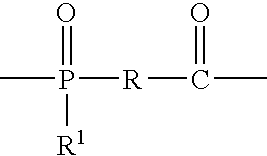Aerogel containing blanket
a blanket and aerogel technology, applied in the field of blankets, can solve the problems of poor mechanical stability of aerogels, prone to settling, brittle aerogels, and inflexible aerogels, and achieve the effects of reducing porosity, density, and thermal conductivity of aerogels
- Summary
- Abstract
- Description
- Claims
- Application Information
AI Technical Summary
Benefits of technology
Problems solved by technology
Method used
Image
Examples
example 1
[0071] The weights of given volumes of aerogel of two mean particle sizes were determined from which their bulk densities were evaluated. The particles were then either fully or partially (i.e., primarily the outer surface layers) wetted by vigorous overnight shaking with water containing Barlox 12i surfactant. Full and partial wetting were accomplished by addition to each part of aerogel 0.8 and 0.2 parts by weight of the wetting agent, respectively. The slurries were dried and the volumes of the resulting dry powders were determined. The bulk densities of the aerogel particles before and after wetting are summarized in Table 1. The data indicates that there is a considerable increase in bulk density when the particles are wetted with 0.8 parts of wetting agent. In contrast, when a reduced amount of wetting agent (0.2 parts) was employed, the particle bulk densities were only slightly larger than those of the initial samples. The result indicates that the density of the hydrophobic...
example 2
[0072] The surface layers of aerogel particles of two mean sizes were wetted with water containing Barlox 12i surfactant. The resulting slurries were then combined with an aqueous dispersion of Kosa type 105 bicomponent fibers (3 denier, 0.64 mm cut length, sheath melting temperature of 128° C.), and then vacuum filtered through a 0.203 by 0.203 m2 (8-inch by 8-inch) funnel. Aerogel mean particle size and weights of aerogel, fiber, and Barlox 12i employed are listed in Table 2. The aerogel was dispersed in about 750 ml of water / Barlox 12i solution by shaking and then stirring until complete wetting took place (determined when no powder floated on the surface of the vigorously stirred slurry). The Kosa fibers were dispersed in about 1.5 liters of water by gentle stirring. These were then added to the aerogel slurry, stirred for about a minute and then filtered. To ensure minimal fiber / aerogel separation because of density differences, gentle stirring was continued during filtration u...
example 3
[0076] 22.5 g of aerogel was vigorously shaken and then stirred with 400 ml of water containing 52.5 g of 30 wt % Barlox 12i wetting agent until a uniform slurry that did not separate on standing was formed. This slurry was added to a dispersion of 33.75 g of Johns Manville Q-fibers in 3 liters of water. The combined slurry was filtered on a 13-inch diameter Buchner. The resulting mat was then dried and then heated to 130° C. to remove the wetting agent. A 0.203 by 0.203 m2 (8-inch by 8-inch) section was cut out of the mat for thermal conductivity evaluation. Additional mats having the same composition were formed and pressed to differing densities. The thermal conductivities of the various blankets and their densities are listed in Table 4. The thermal conductivities of these mats, regardless of mat density, are much larger than those listed in Table 3. Since the volume of the Q fibers to aerogel employed was not substantially larger than the volume of Kosa fiber to aerogel, the in...
PUM
| Property | Measurement | Unit |
|---|---|---|
| densities | aaaaa | aaaaa |
| porosities | aaaaa | aaaaa |
| particle size diameter | aaaaa | aaaaa |
Abstract
Description
Claims
Application Information
 Login to View More
Login to View More - R&D
- Intellectual Property
- Life Sciences
- Materials
- Tech Scout
- Unparalleled Data Quality
- Higher Quality Content
- 60% Fewer Hallucinations
Browse by: Latest US Patents, China's latest patents, Technical Efficacy Thesaurus, Application Domain, Technology Topic, Popular Technical Reports.
© 2025 PatSnap. All rights reserved.Legal|Privacy policy|Modern Slavery Act Transparency Statement|Sitemap|About US| Contact US: help@patsnap.com


